Dill (Anethum graveolens) is a fragrant, feathery herb cherished in kitchens and herbal medicine cabinets around the world. Known for its delicate leaves, zesty seeds, and refreshing flavor, dill is a staple for cooking—whether sprinkled over roasted vegetables, added to pickles, or used to season fish dishes. Beyond its culinary uses, dill has also been valued in traditional medicine for soothing digestion, relieving bloating, and calming the nerves.
The good news? You don’t need a sprawling outdoor garden to enjoy fresh dill. With the right setup, you can successfully grow dill indoors year-round for cooking and herbal remedies. Whether you’re a seasoned indoor gardener or just starting your herb journey, this guide will cover everything you need to know—from choosing containers and soil to harvesting and using your homegrown dill.
1. Why Grow Dill Indoors?
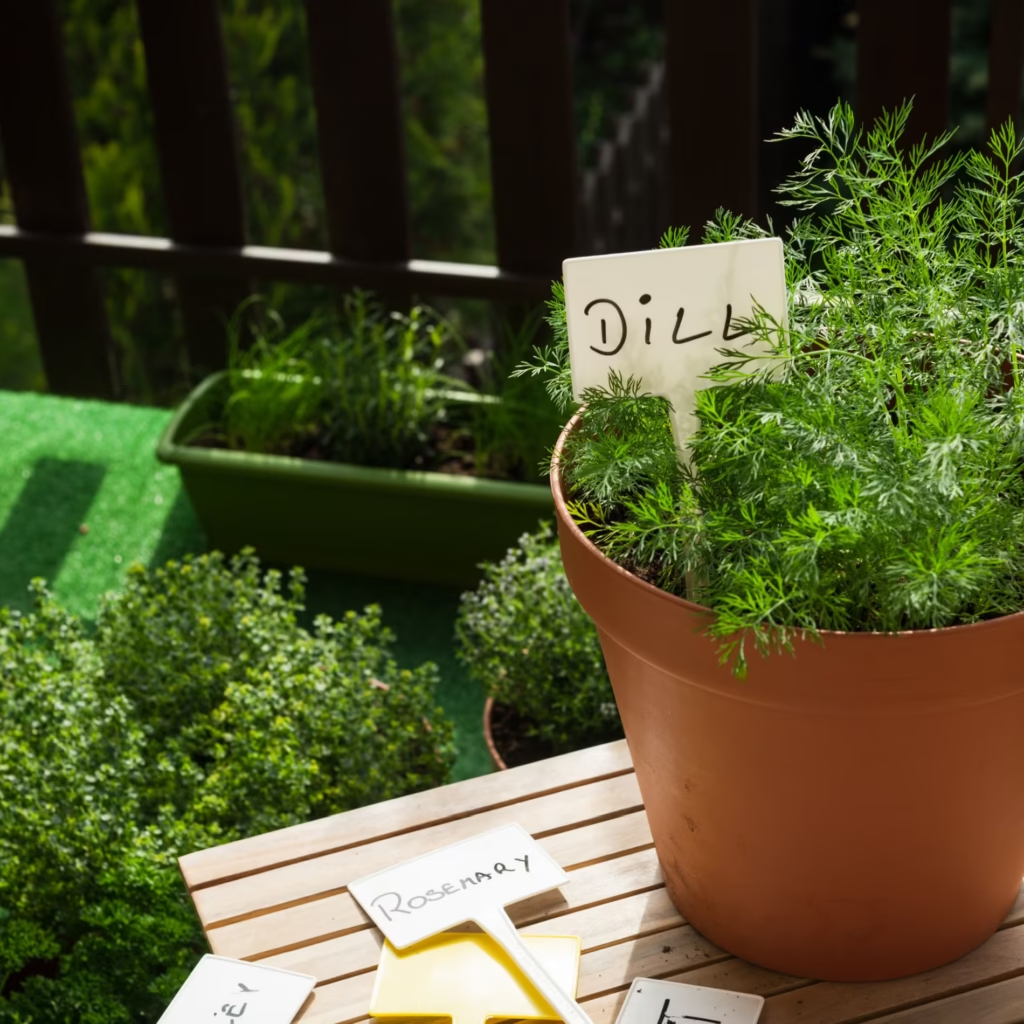
Growing dill indoors offers several advantages:
- Year-round harvest: No need to wait for summer; you can have fresh leaves at your fingertips in any season.
- Convenience: Snip leaves right in your kitchen whenever you need them.
- Pest control: Indoors, dill is less likely to suffer from aphids, caterpillars, or garden pests.
- Dual purpose: Beyond cooking, dill can be dried or steeped for herbal remedies like teas, tinctures, and soothing oils.
2. Choosing the Right Dill Variety for Indoors
While all dill varieties share a similar flavor, some adapt better to container life indoors. Popular options include:
- Fernleaf Dill: A compact, slow-bolting variety that stays under 18 inches tall. Perfect for small pots.
- Bouquet Dill: Common in kitchens, grows up to 2–3 feet but can still be managed indoors with larger containers.
- Dukat Dill: Known for its sweet flavor and lush foliage, ideal for harvesting leaves frequently.
For beginners, Fernleaf Dill is the best choice, since it grows well in smaller spaces without taking over.
3. Containers and Soil
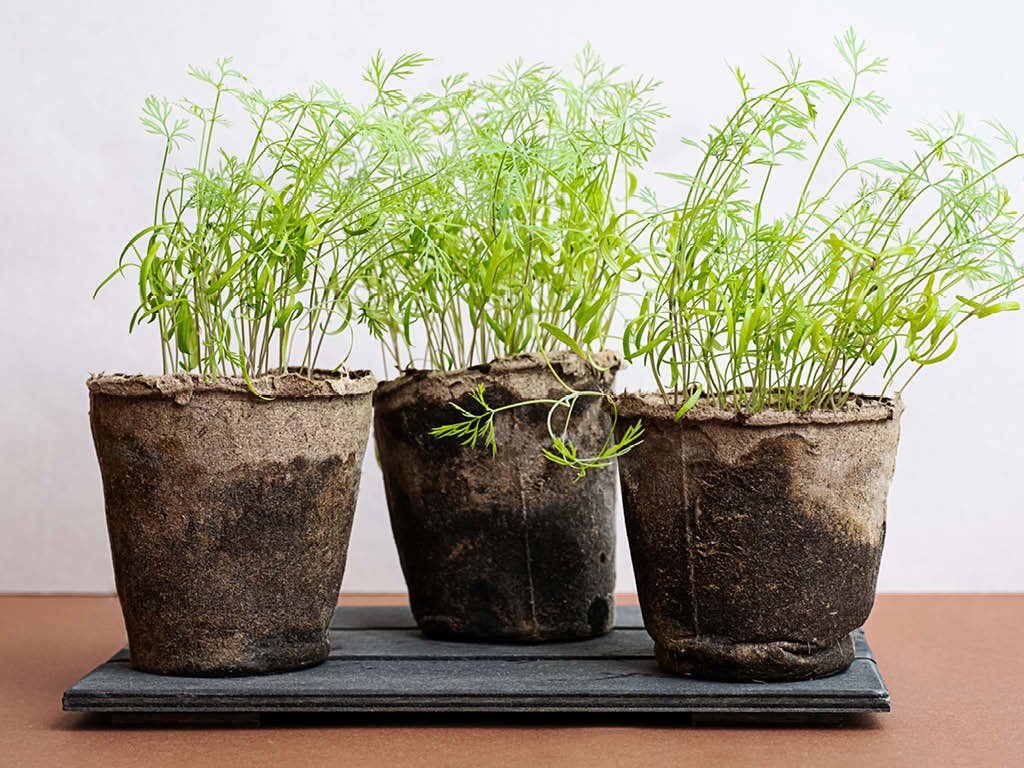
Choosing a Container
- Select a pot that’s at least 8–12 inches deep, as dill has long taproots.
- Wider containers allow multiple plants, but avoid overcrowding since dill doesn’t like competition.
- Ensure good drainage holes, as waterlogged soil can damage roots.
Soil Requirements
- Dill thrives in light, well-draining soil rich in organic matter.
- A mix of standard potting soil with added perlite or sand works well.
- Soil pH should be slightly acidic to neutral (6.0–7.0).
4. Light Requirements
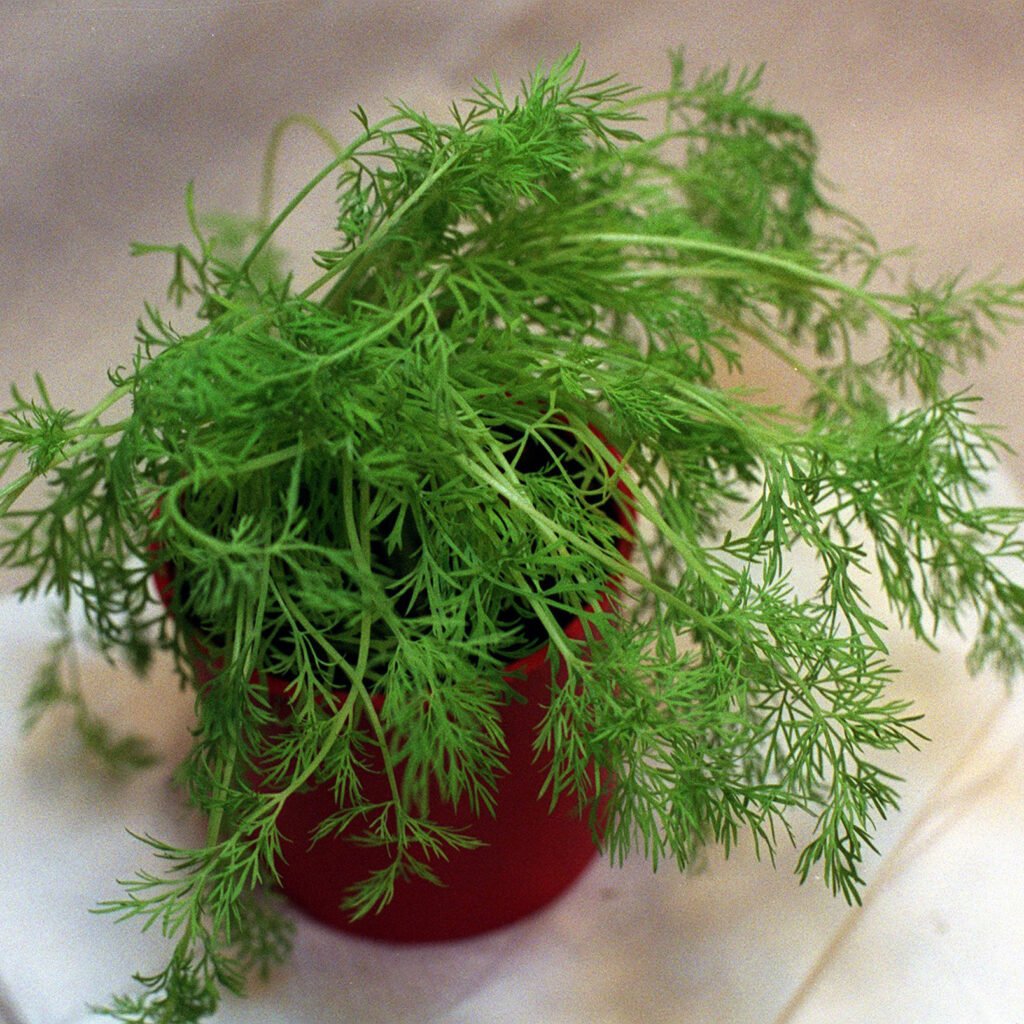
Dill is a sun-loving herb, so providing sufficient light indoors is crucial.
- Natural light: Place your dill in a south- or west-facing window where it can get at least 6–8 hours of direct sunlight daily.
- Grow lights: If your home doesn’t have enough sun, supplement with LED grow lights. Position lights 6–8 inches above the plant and run them for 12–14 hours a day.
Without enough light, dill becomes leggy and produces fewer leaves.
5. Temperature and Humidity
Dill prefers the same climate most homes provide:
- Temperature: Keep between 65–75°F (18–24°C). Avoid cold drafts near windows in winter.
- Humidity: Dill tolerates average indoor humidity well and doesn’t require special adjustments.
If your air is extremely dry, a small humidity tray nearby can help keep leaves fresh.
6. Watering Dill Indoors
Watering is all about balance.
- Keep the soil consistently moist but never soggy.
- Water deeply when the top inch of soil feels dry.
- Reduce watering slightly in winter, when growth slows.
Signs of overwatering: yellowing leaves and root rot.
Signs of underwatering: wilted, crispy foliage.
7. Feeding Your Indoor Dill
Since dill grows quickly, it needs nutrients to support leaf production.
- Use a balanced, water-soluble fertilizer (such as 10-10-10) every 3–4 weeks.
- For organic options, liquid seaweed or compost tea works well.
- Avoid over-fertilizing, as this can produce lush leaves with weak flavor.
8. Companion Planting Indoors
Although often discussed in outdoor gardening, companion planting can work indoors too. Dill pairs well with other herbs in the same light conditions, such as:
- Parsley
- Basil
- Chives
- Cilantro
Avoid growing dill too close to fennel indoors, as they can cross-pollinate and affect flavor.
9. Harvesting Dill for Cooking and Remedies
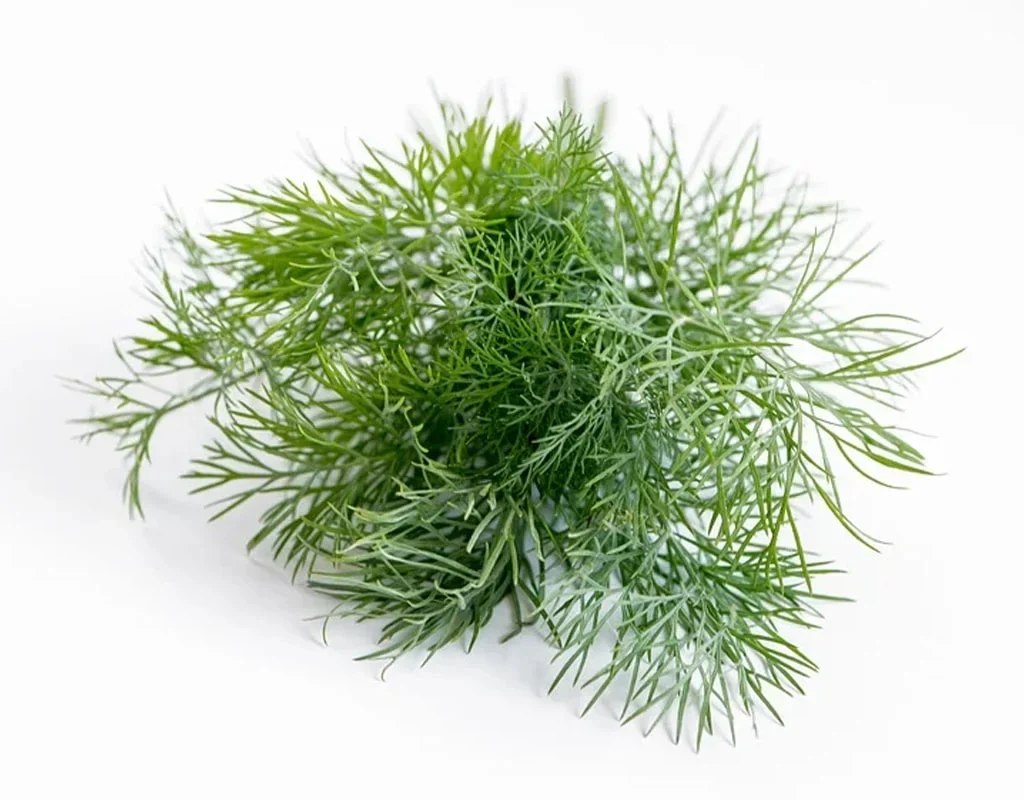
The beauty of dill is that you can harvest it at multiple stages.
- Leaves (dill weed): Begin snipping leaves once the plant is 6–8 inches tall. Always harvest from the outside, leaving inner growth to continue.
- Seeds: After flowering, dill produces seed heads that can be collected when they turn brown and dry. These seeds are flavorful in pickling and also useful in herbal medicine.
- Flowers: Yellow umbels can be harvested for pickling recipes or as a decorative garnish.
Regular harvesting encourages new leaf growth, so don’t be afraid to snip often.
10. Storing and Preserving Dill
To extend the use of your harvest:
- Fresh use: Keep stems in a glass of water in the fridge for up to a week.
- Drying: Hang small bunches upside down in a cool, dry place, then crumble leaves into jars.
- Freezing: Chop leaves and freeze in ice cube trays with water or olive oil for convenient cooking portions.
- Seeds: Store in airtight jars once fully dried.
11. Using Dill in Cooking
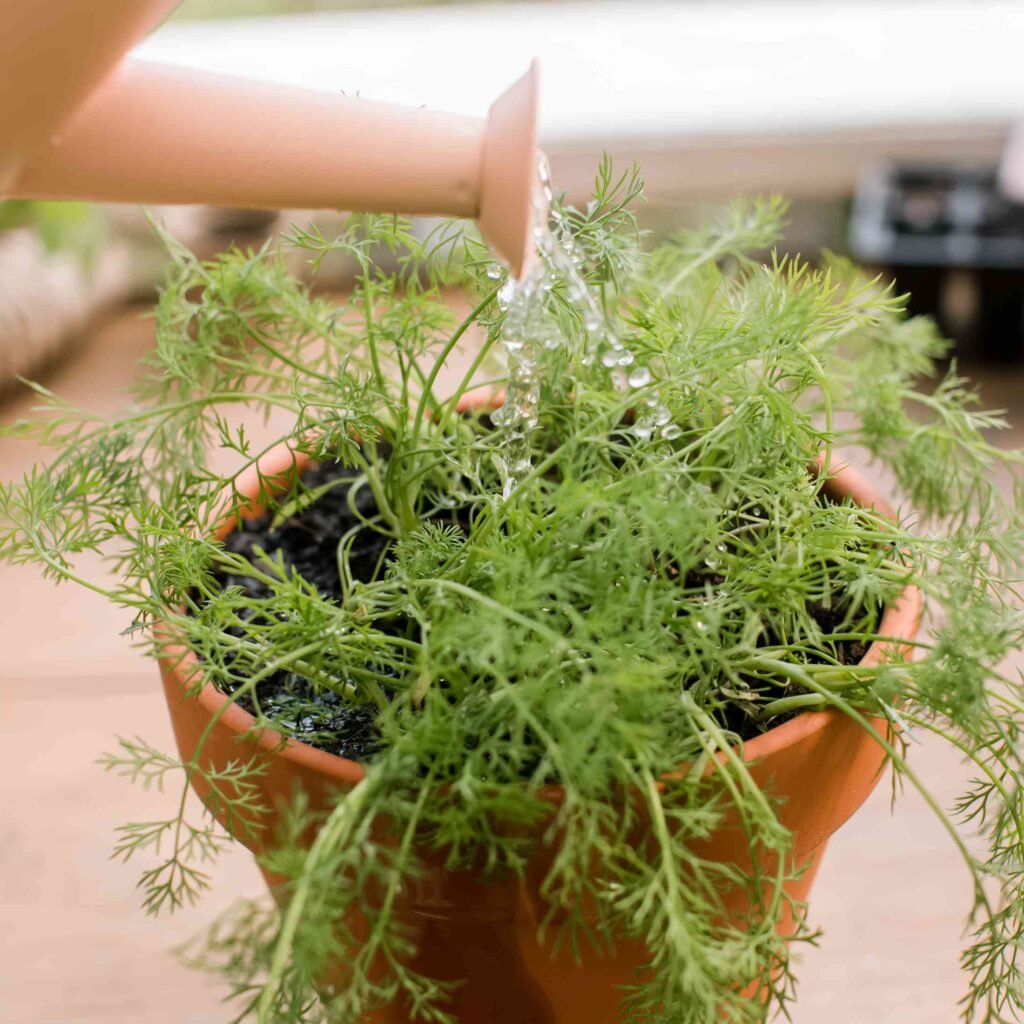
Fresh dill adds a burst of flavor to countless dishes:
- Toss chopped leaves into salads, soups, and potato dishes.
- Use in marinades for fish, especially salmon.
- Mix into yogurt sauces, dips, and salad dressings.
- Infuse vinegar with dill for a tangy herbal twist.
- Add seeds to pickles, bread, or stews for a stronger flavor.
12. Dill in Herbal Remedies
For centuries, dill has been valued for its medicinal properties:
- Digestive aid: Dill tea, made from leaves or seeds, can ease bloating, gas, and indigestion.
- Sleep support: Dill has mild calming effects that may help reduce anxiety and promote rest.
- Immune boost: Its natural compounds contain antioxidants that support general wellness.
- Breath freshener: Chewing dill seeds is a traditional remedy for freshening breath.
Always consult a healthcare provider before using herbs medicinally, especially for children, pregnant women, or people on medication.
13. Common Indoor Growing Problems
Even indoors, dill can face challenges. Here’s how to troubleshoot:
- Leggy plants: Not enough sunlight. Move closer to a bright window or add grow lights.
- Yellowing leaves: Overwatering or poor drainage. Check soil and container holes.
- Slow growth: Lack of nutrients. Apply diluted fertilizer.
- Aphids or spider mites: Rare indoors but possible. Treat with insecticidal soap or neem oil if needed.
14. Succession Planting for Year-Round Dill
Since dill is an annual herb, it doesn’t live forever indoors. Typically, a plant lasts about 8–12 weeks before it flowers and sets seed.
To ensure a constant supply:
- Succession sowing: Plant new seeds every 3–4 weeks.
- Keep multiple pots going, so as one plant matures, the next is ready to harvest.
This way, you’ll always have fresh dill leaves available for your kitchen and remedies.
Final Thoughts
Dill may be delicate in appearance, but it’s surprisingly easy to grow indoors once you understand its needs. With enough light, consistent watering, and regular harvesting, dill will reward you with fresh, flavorful leaves and seeds throughout the year. Whether you’re adding it to homemade pickles, whipping up a dill-infused dip, or brewing a soothing tea, your indoor dill will prove itself as both a culinary superstar and a gentle herbal remedy.
By growing dill indoors, you’re not just cultivating a plant—you’re cultivating a lifestyle of freshness, wellness, and flavor at your fingertips.
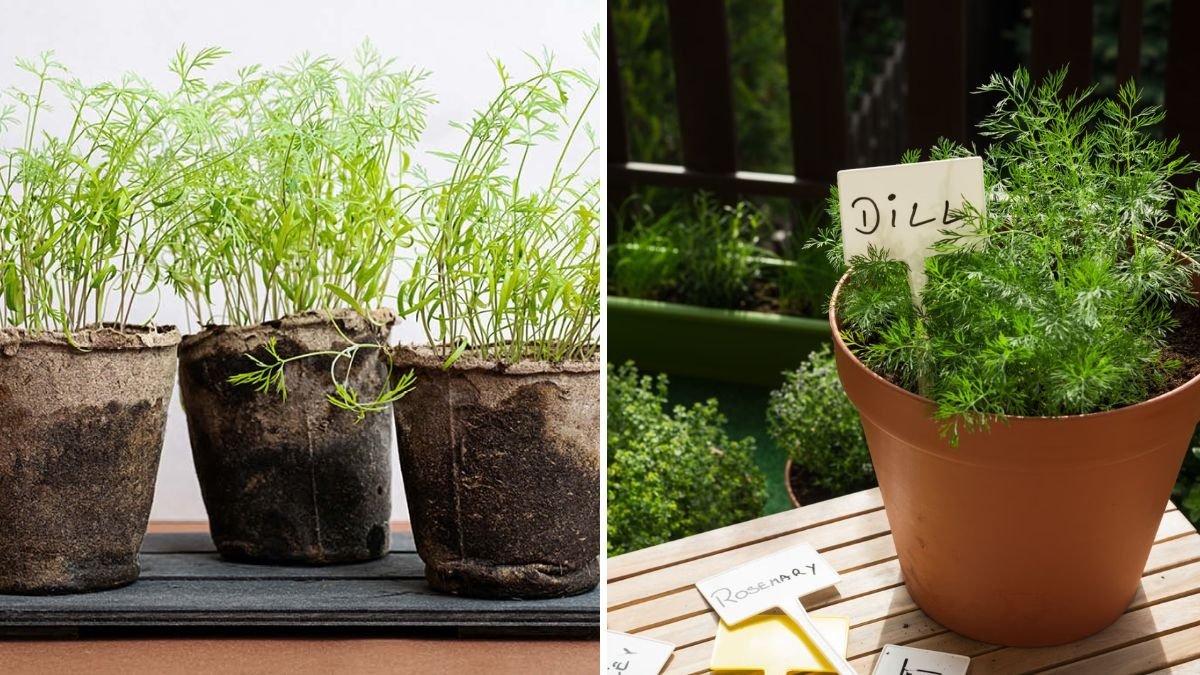




Leave A Comment